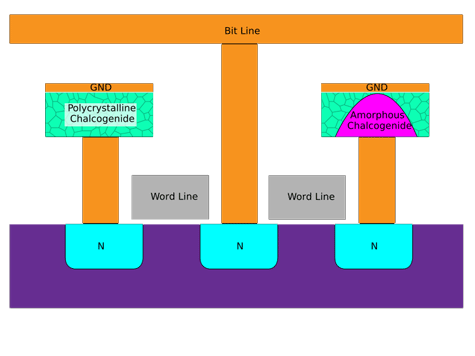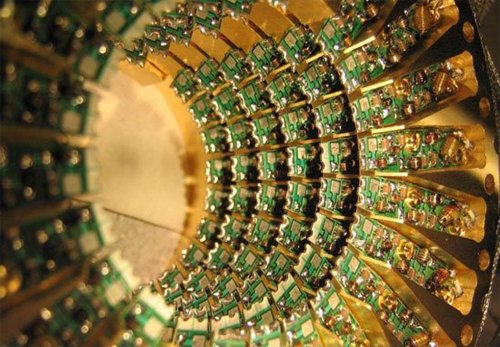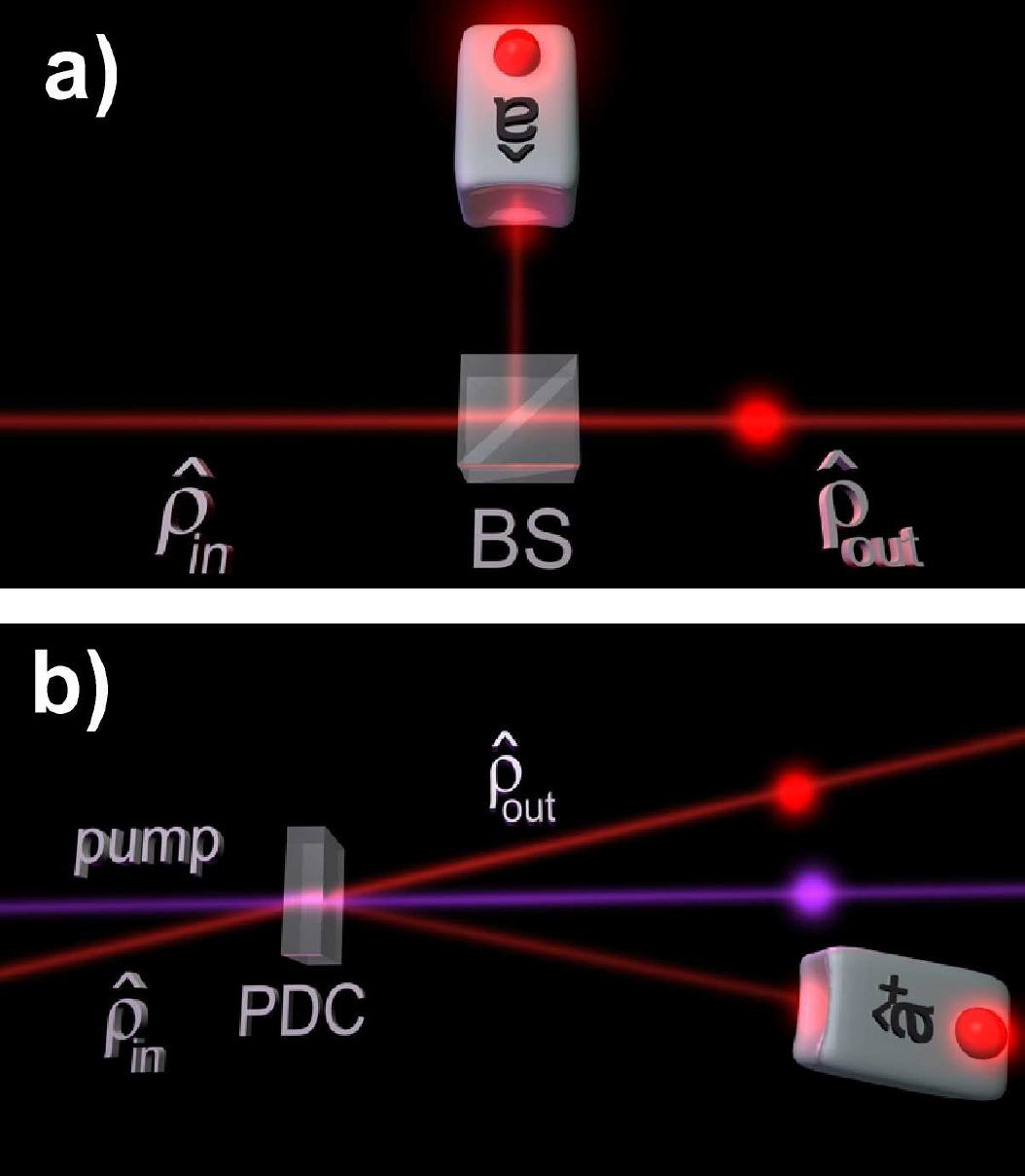What did not Gordon Moore know
The memory on phase transitions, the first applied quantum computer, DNA as an integrated circuit, and entangled photons are scattered events and significant breakthroughs, which for some time do not interact with each other and force the inquisitive minds of the entire planet to look for ways to most effectively consolidate technologies and solving applied problems. We were lucky to live in the era of digital evolution: four generations of computer technologies have changed before our eyes, and now, gentlemen, let's observe the development and development of the next generation.

SSD SSD technology has recently come into widespread use and now demonstrates its speed advantages in all its glory, however, another technology is already in a hurry to replace it, which, according to developers, will surpass SSD technology. The team of researchers from the University of California at San Diego cannot Next week is going to demonstrate a new solid-state data storage device, the storage of information in which is memory based on phase transitions. This device is thousands of times faster than regular hard drives and seven times faster than the best samples of modern SSD drives.
Phase-change memory (PCM) memory for data storage uses metal chalcogenide alloy particles. Using the high temperature obtained by passing an electric current, the alloy particles are converted to a crystalline, then to an amorphous state. To read the recorded information, a smaller current is used, the value of which indicates in which state the alloy crystal is located.
The Moneta data storage device developed on the basis of Micron Technology’s first-generation PCM memory chips can provide reading speeds of large amounts of information equal to 1.1 gigabytes per second. Data is recorded at a speed of 371 megabytes per second. When reading short blocks of information of 512 bytes, Moneta shows a speed of 327 megabytes per second, and when writing such blocks - 91 megabytes per second. These characteristics exceed the speed of SSD-drives in two to seven times. Moneta provides very low latency for random access to data, which reduces power consumption for calculations that require intensive non-sequential access to data.
The second generation of the Moneta device may appear in six to nine months, and in a few years this technology may become available on the market. But the introduction of such devices may face some problems.
Thus, in the foreseeable future, we need to prepare to change not only the technology of information storage, but also its processing. Some confident steps in this direction have already been made.

Canadian company D-Wave Systems, after so many years of work in the direction of developing quantum computers, has finally received the first real order. And the first customer, who allowed himself to fork out for the purchase of such an expensive device, was the American military company Lockheed Martin.
In recent years, the company D-Wave claimed that they managed to create a workable quantum computer. Back in 2007, the company boasted a quantum computing device capable of solving simple tasks, such as solving a Sudoku puzzle. But most experts had doubts about whether quantum effects are actually used in this device, rather than the principles of traditional physics.
However, the latest publication of D-Wave in Nature magazine dispelled all doubts. They really managed to realize practically what others could only do in laboratories. And that was enough to convince Lockheed Martin, who signed a lengthy contract for the acquisition, maintenance and support of a quantum computer with a bit of 128 quantum bits (qubits).
')
Representatives of D-Wave claim that their quantum computer is ideal for testing software developed for other platforms, analyzing financial risks, analyzing a person’s emotions through his photographs, and for solving other problems requiring extra computational performance.
Suppose that at this stage the first quantum computer resembles the MARK II in its dimensions, but we know about the property of history to repeat with a qualitatively different level. Let's give the floor to the fundamental science:
“Entangled photons” sounds rather strange to the inexperienced in questions of quantum mechanics, as well as the designation of some physical quantities, for example, “Flavor of a quark” or “Strangeness of a particle”, or even “Director”. The phenomenon of quantum entanglement is a very fragile interaction. At one moment there can be an amazing invisible connection between the particles, due to which these particles become the same, even if they are separated by a large distance, at another moment this connection can be destroyed for no apparent reason. Therefore, the record set by Chinese scientists can be considered something extraordinary. They managed to simultaneously entangle eight photons at once, control their movement and study them at this time. How are photons entangled? It all starts with a single photon of a high-energy beam of a high-power laser, using an optical crystal having non-linear characteristics, this photon is divided into two photons. As a result, two weaker, entangled photons are obtained, any change in one of them immediately manifests itself in the second. One of the received photons is saved in the setup, and the second is split into two photons again, now there are already three entangled photons, and so on.
But each photon separation attenuates the beam of light twice, and earlier this was exactly the obstacle that prevented the creation of a controlled system of eight entangled photons. But a team of Chinese scientists from the China University of Science and Technology in Hefei (University of Science and Technology of China in Hefei) used a new powerful ultraviolet laser, the photons of which have very high energy. Using the light of this laser, scientists managed to quickly get eight entangled photons, and after some time they learned to control the entire system.

This achievement is quite significant for many areas, in the first place of which is the area of quantum computing. The system with eight connected photons will allow scientists to penetrate the secrets of the quantum world to a previously unattainable depth. This will make it possible to put together parts of technological enigmas that should in the future become the basis of quantum computers. The eye of the second generation of quantum computing systems is visible in our eyes. I am proud of the breakthroughs of humanity.
UPD: Source - PCM
UPD: Original Source - Photons
UPD: Source - D-Wave

SSD SSD technology has recently come into widespread use and now demonstrates its speed advantages in all its glory, however, another technology is already in a hurry to replace it, which, according to developers, will surpass SSD technology. The team of researchers from the University of California at San Diego cannot Next week is going to demonstrate a new solid-state data storage device, the storage of information in which is memory based on phase transitions. This device is thousands of times faster than regular hard drives and seven times faster than the best samples of modern SSD drives.
Phase-change memory (PCM) memory for data storage uses metal chalcogenide alloy particles. Using the high temperature obtained by passing an electric current, the alloy particles are converted to a crystalline, then to an amorphous state. To read the recorded information, a smaller current is used, the value of which indicates in which state the alloy crystal is located.

The Moneta data storage device developed on the basis of Micron Technology’s first-generation PCM memory chips can provide reading speeds of large amounts of information equal to 1.1 gigabytes per second. Data is recorded at a speed of 371 megabytes per second. When reading short blocks of information of 512 bytes, Moneta shows a speed of 327 megabytes per second, and when writing such blocks - 91 megabytes per second. These characteristics exceed the speed of SSD-drives in two to seven times. Moneta provides very low latency for random access to data, which reduces power consumption for calculations that require intensive non-sequential access to data.
The second generation of the Moneta device may appear in six to nine months, and in a few years this technology may become available on the market. But the introduction of such devices may face some problems.
“We managed to create a very fast data storage device. But to really use it you will need to completely change the hardware and software that manages the storage of computers, ”says university professor Steven Swanson. “Information storage systems developed over the last 40 years have been made with the expectation of very, very slow hard drives.”
Thus, in the foreseeable future, we need to prepare to change not only the technology of information storage, but also its processing. Some confident steps in this direction have already been made.

Canadian company D-Wave Systems, after so many years of work in the direction of developing quantum computers, has finally received the first real order. And the first customer, who allowed himself to fork out for the purchase of such an expensive device, was the American military company Lockheed Martin.
In recent years, the company D-Wave claimed that they managed to create a workable quantum computer. Back in 2007, the company boasted a quantum computing device capable of solving simple tasks, such as solving a Sudoku puzzle. But most experts had doubts about whether quantum effects are actually used in this device, rather than the principles of traditional physics.

However, the latest publication of D-Wave in Nature magazine dispelled all doubts. They really managed to realize practically what others could only do in laboratories. And that was enough to convince Lockheed Martin, who signed a lengthy contract for the acquisition, maintenance and support of a quantum computer with a bit of 128 quantum bits (qubits).
')
Representatives of D-Wave claim that their quantum computer is ideal for testing software developed for other platforms, analyzing financial risks, analyzing a person’s emotions through his photographs, and for solving other problems requiring extra computational performance.
Suppose that at this stage the first quantum computer resembles the MARK II in its dimensions, but we know about the property of history to repeat with a qualitatively different level. Let's give the floor to the fundamental science:
“Entangled photons” sounds rather strange to the inexperienced in questions of quantum mechanics, as well as the designation of some physical quantities, for example, “Flavor of a quark” or “Strangeness of a particle”, or even “Director”. The phenomenon of quantum entanglement is a very fragile interaction. At one moment there can be an amazing invisible connection between the particles, due to which these particles become the same, even if they are separated by a large distance, at another moment this connection can be destroyed for no apparent reason. Therefore, the record set by Chinese scientists can be considered something extraordinary. They managed to simultaneously entangle eight photons at once, control their movement and study them at this time. How are photons entangled? It all starts with a single photon of a high-energy beam of a high-power laser, using an optical crystal having non-linear characteristics, this photon is divided into two photons. As a result, two weaker, entangled photons are obtained, any change in one of them immediately manifests itself in the second. One of the received photons is saved in the setup, and the second is split into two photons again, now there are already three entangled photons, and so on.

But each photon separation attenuates the beam of light twice, and earlier this was exactly the obstacle that prevented the creation of a controlled system of eight entangled photons. But a team of Chinese scientists from the China University of Science and Technology in Hefei (University of Science and Technology of China in Hefei) used a new powerful ultraviolet laser, the photons of which have very high energy. Using the light of this laser, scientists managed to quickly get eight entangled photons, and after some time they learned to control the entire system.

This achievement is quite significant for many areas, in the first place of which is the area of quantum computing. The system with eight connected photons will allow scientists to penetrate the secrets of the quantum world to a previously unattainable depth. This will make it possible to put together parts of technological enigmas that should in the future become the basis of quantum computers. The eye of the second generation of quantum computing systems is visible in our eyes. I am proud of the breakthroughs of humanity.
UPD: Source - PCM
UPD: Original Source - Photons
UPD: Source - D-Wave
Source: https://habr.com/ru/post/120979/
All Articles